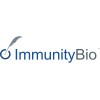
RBD-HPV: Risk-Based De-Intensification for HPV+ HNSCC
Human Papillomavirus (HPV)Head and Neck Squamous Cell Carcinoma (HNSCC)The purpose of this research study is to determine the rate of local regional control at 2 years when using de-intensified chemoradiotherapy (CRT) in patients with Human Papillomavirus (HPV)-associated head and neck squamous cell carcinoma (HNSCC). Local regional control means no recurrence of the cancer in the head or neck area. Study subjects will be enrolled into 4 groups. Group/treatment will be based on a number of factors, including smoking and drinking history.

RM-1995 Photoimmunotherapy, as Monotherapy or Combined With Pembrolizumab, in Patients With Advanced...
Cutaneous Squamous Cell CarcinomaHead and Neck Squamous Cell CarcinomaA phase 1a/1b, open-label, RM-1995 drug-dose escalation study designed to evaluate the safety, tolerability, pharmacokinetics (PK), pharmacodynamics (PD), and preliminary efficacy of RM-1995 photoimmunotherapy treatment as monotherapy (phase 1a) or combined with pembrolizumab (phase 1b) in patients with cutaneous squamous cell carcinoma (cuSCC) or head and neck squamous cell carcinoma (HNSCC) that has progressed despite all available standard therapies.

Pre-operative Mocetinostat (MGCD0103) and Durvalumab (MEDI4736) (PRIMED) for Squamous Cell Carcinoma...
Squamous Cell CarcinomaHead And Neck2 moreThis is a Phase 1 Window of Opportunity study to evaluate the pharmacodynamic and immune effects of pre-operative therapy with Mocetinostat and Durvalumab on patients with squamous cell carcinoma of the oral cavity.

QUILT-3.047: NANT Head and Neck Squamous Cell Carcinoma (HNSCC) Vaccine: Combination Immunotherapy...
Head and Neck Squamous Cell CarcinomaThis is a phase 1b/2 study to evaluate the safety and efficacy of metronomic combination therapy in subjects with HNSCC who have progressed on or after previous chemotherapy and anti-PD-1/PD-L1 therapy.

Pembrolizumab and Induction Chemotherapy in Head and Neck Squamous Cell Carcinoma (PICH Study)
Head and Neck Squamous Cell Carcinoma (HNSCC)Non-randomized phase I/II, open-labeled clinical study, 1-arm, multicenter, of docetaxel (T), cisplatin (P), 5-fluorouracil (F) and pembrolizumab every 21 days for 3 cycles followed by radiotherapy (RT) combined with carboplatin in untreated unresectable locally-advanced Head and Neck Squamous Cell Carcinoma (HNSCC). The TPF and pembrolizumab combination will be called TP²F.

Phase 1b Food Based Modulation of Biomarkers in Human Tissues at High-Risk for Oral Cancer.
Metastatic Squamous Neck Cancer With Occult Primary Squamous Cell CarcinomaSalivary Gland Squamous Cell Carcinoma56 moreThis randomized phase I/II trial studies the side effects and best way to give lyophilized black raspberries in preventing oral cancer in high-risk patients previously diagnosed with stage I-IV or in situ head and neck cancer. Chemoprevention is the use of certain drugs to keep cancer from forming. The use of lyophilized black raspberries may prevent oral cancer. Studying samples of oral cavity scrapings, blood, urine, and saliva in the laboratory from patients receiving lyophilized black raspberries may help doctors learn more about changes that occur in DNA and the effect of lyophilized back raspberries on biomarkers.

Biological Vaccine: Semi-allogeneic Human Fibroblasts (MRC-5) Transfected With DNA
Head and Neck Squamous Cell Carcinoma (HNSCC)Hypothesis The incidence of toxicity in patients receiving the tumor DNA-transfected fibroblast vaccine will be acceptably low and the immunologic response rate sufficiently high to warrant further study of this therapy The study of the vaccine will proceed in two stages after the method of Simon (102). In the first stage, 15 patients will be accrued and treated. If two or fewer objective immunologic responses occur, the study will be terminated. If 3 or more responses are observed, the study will proceed to the second stage, accruing an additional 22 patients. If the second stage is complete and a total of 9 or more immunologic responses are observed among the 37 patients treated, the treatment response rate for the vaccine will be considered high enough to warrant further study. Conversely, if the evaluation of the vaccine concludes at the first stage, or if 8 or fewer total immunologic responses occur after completing the second stage, the vaccine will not be considered for further study.

S0225 Capecitabine in Treating Patients Who Have Undergone Surgery for Locally Recurrent or Persistent...
Recurrent Squamous Cell Carcinoma of the Lip and Oral CavityRecurrent Squamous Cell Carcinoma of the Paranasal Sinus and Nasal Cavity3 moreRATIONALE: Drugs used in chemotherapy, such as capecitabine, work in different ways to stop tumor cells from dividing so they stop growing or die. Giving capecitabine after surgery may kill any remaining tumor cells. PURPOSE: This phase II trial is studying how well capecitabine works in treating patients who have undergone surgery for locally recurrent or persistenthead and neck cancer.

The RESCUE Study: Survival and Functional Outcomes Following Salvage Surgery for RESidual or reCurrent...
Head and Neck CancerThe RESCUE study is a combined retrospective and prospective multicentre cohort study investigating the survival and functional outcomes in patients undergoing salvage surgery for recurrent, residual, and new primary head and neck squamous cell carcinoma (SCC). Additionally, the RESCUE study will contain an exploratory molecular analysis of consenting patients to assess the relationship between cancer genomics, previous radiotherapy, and recurrence in head and neck cancer.

Surveillance of Regional Nodal Basins and Gene Expression Profiling in Patients With Primary High...
Cutaneous Squamous Cell Carcinoma of the Head and NeckIn this prospective cohort study, investigators will conduct ultrasound surveillance of the nodal basins of patients with head and neck cutaneous squamous cell carcinoma (cSCC) whose tumors are considered high risk and staged by the Brigham and Women's Hospital (BWH) tumor staging system. The study will enroll patients with tumors staged T2a and who are also immunosuppressed (from solid organ transplant, hematologic malignancy or autoimmune disease), T2b (sentinel lymph node negative), and T3 (sentinel lymph node negative). After two years of surveillance, outcomes regarding local recurrence, nodal metastasis, disease specific death, and overall survival will be compared with historical controls with the overall hypothesis that ultrasound surveillance will detect subclinical disease earlier and help improve outcomes.
